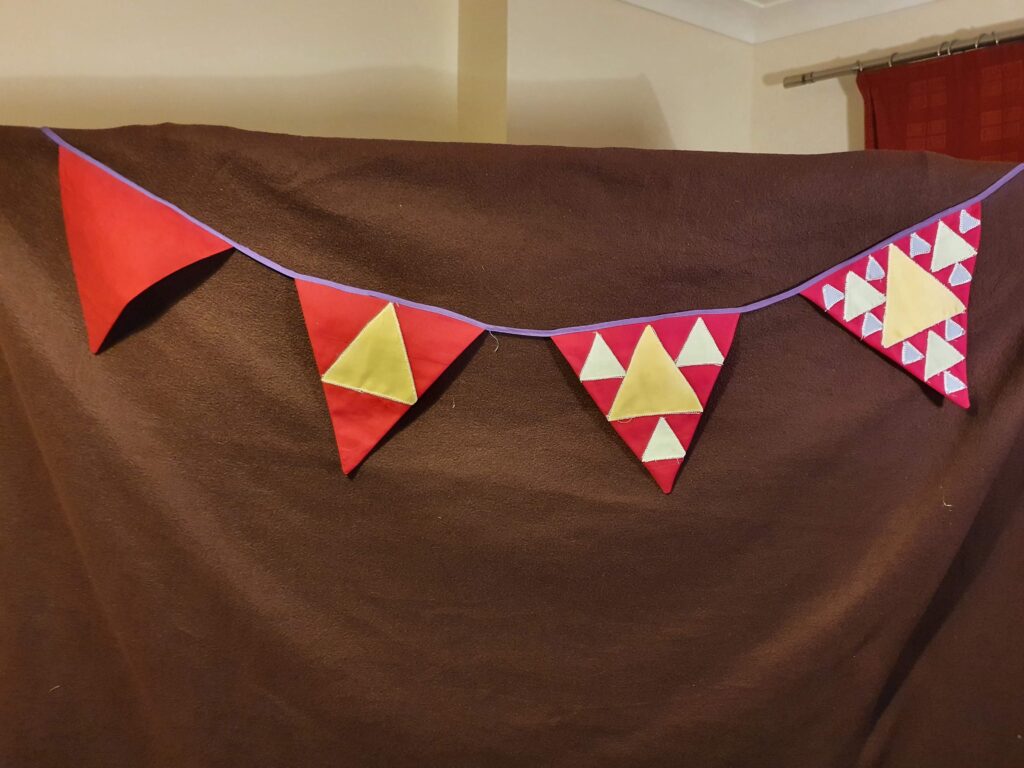Some fractal bunting
Back in the autumn, the excellent Aperiodical website ran a competition to design “fractal bunting”. I had done a fair amount of sewing over the summer, making face masks for me and my loved ones so that we could protect ourselves and others when out and about while also looking stylish in a variety of fabrics that had been sitting in my stash for years waiting for the perfect use. When I saw the “fractal bunting” prompt, it seemed like a good excuse to use the sewing machine for something a little different. I had never tried making bunting, but as it’s usually triangular, it seemed like the Sierpinski Triangle would be a good starting point for my design.
I found a bunting pattern and cut out a paper template, and cut out four red triangles. Then I folded the top corner of my template down to meet the midpoint of the base to make a new template, a triangle with half the side length and a quarter of the area. I cut out three yellow triangles using this template. I did the same again to cut out six green triangles and then finally cut out nine tiny blue triangles. Then I figured out how to use the applique settings on my sewing machine to attach all the different sizes of triangle as shown below:

My bunting shows four stages of evolution of the Sierpinski triangle. I was right at the limits of being able to sew round the smallest triangles which is why they look a bit wonky – if I wanted to do five stages I’d have to make my bunting significantly bigger! However, I think there are lots of “What do you notice? What do you wonder?” questions that the image above might provoke:
If I made 5 pieces of bunting (with one extra fractal layer), how many of each triangle would I need?
The stitching represents the perimeter of each triangle added, so how much extra stitching is there on each new layer?
Which of the four flags took longest to make? How much longer did it take to make than the previous one?
I found that as with so many mathematical ideas, actually making a physical model helped me understand the idea in new ways. Sewing round all those little triangles gave me a different appreciation of the fractal nature, and coming to the physical limits of the material I was working with made me reflect on the theoretical nature of limiting processes. When we talk about infinity and limits, we are talking about something we can’t hold in our hands or see. I can’t physically make the Sierpinski triangle, I can only make an approximation to it. But making that approximation helps me to think about the properties of the theoretical mathematical object in a different way.
